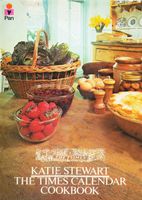Advertisement
Bread-making
Appears in
Published 1977
For bread-making you need wholemeal flour or strong plain flour and yeast. Where fresh yeast is not obtainable dried yeast can be used. Usually available from most grocers or chemists, dried yeast will keep in the tin for up to 6 months. Dried yeast is twice as concentrated as fresh yeast and in a recipe listing fresh yeast, only half as much dried yeast is required, i.e. 15g(½ oz or 1 level tablespoon) dried yeast equals 25g(½ oz) fresh yeast.
Fresh yeast needs only to be blended with the warm liquid in the recipe before adding to the flour. Dried yeast needs to be reconstituted first. The water used should be slightly hotter than for mixing fresh yeast, about 43°C. (110°F.) or hand-hot. A drop on the wrist should feel hot, but not burning. To start yeast working a little sweetness is required, and this can take the form of sugar. You may like to use a little honey in white bread or treacle in brown bread. Once blended with liquid, dried yeast needs to stand in a warm place for about 10 minutes or until frothy. Then the yeast can be added to the flour.

